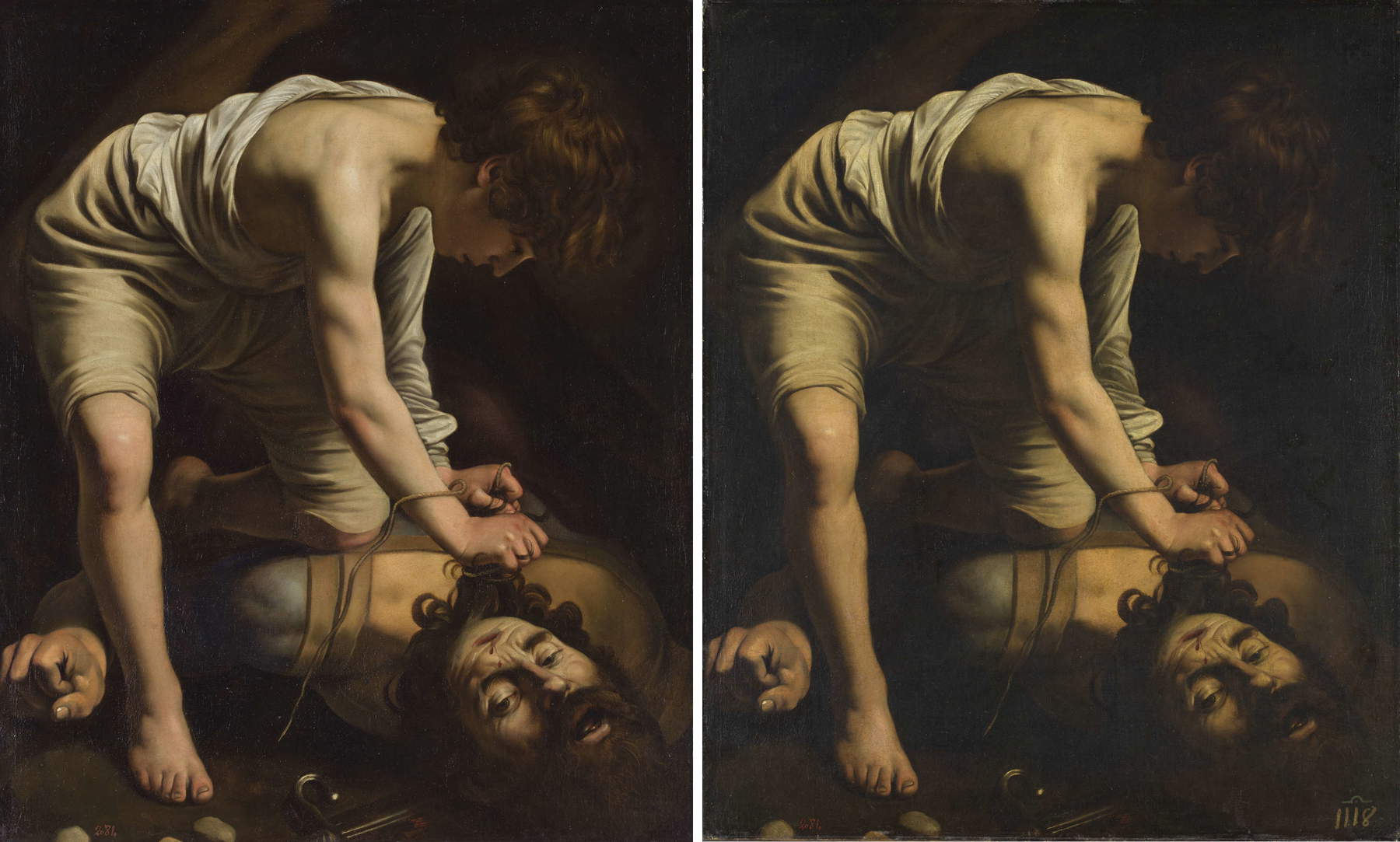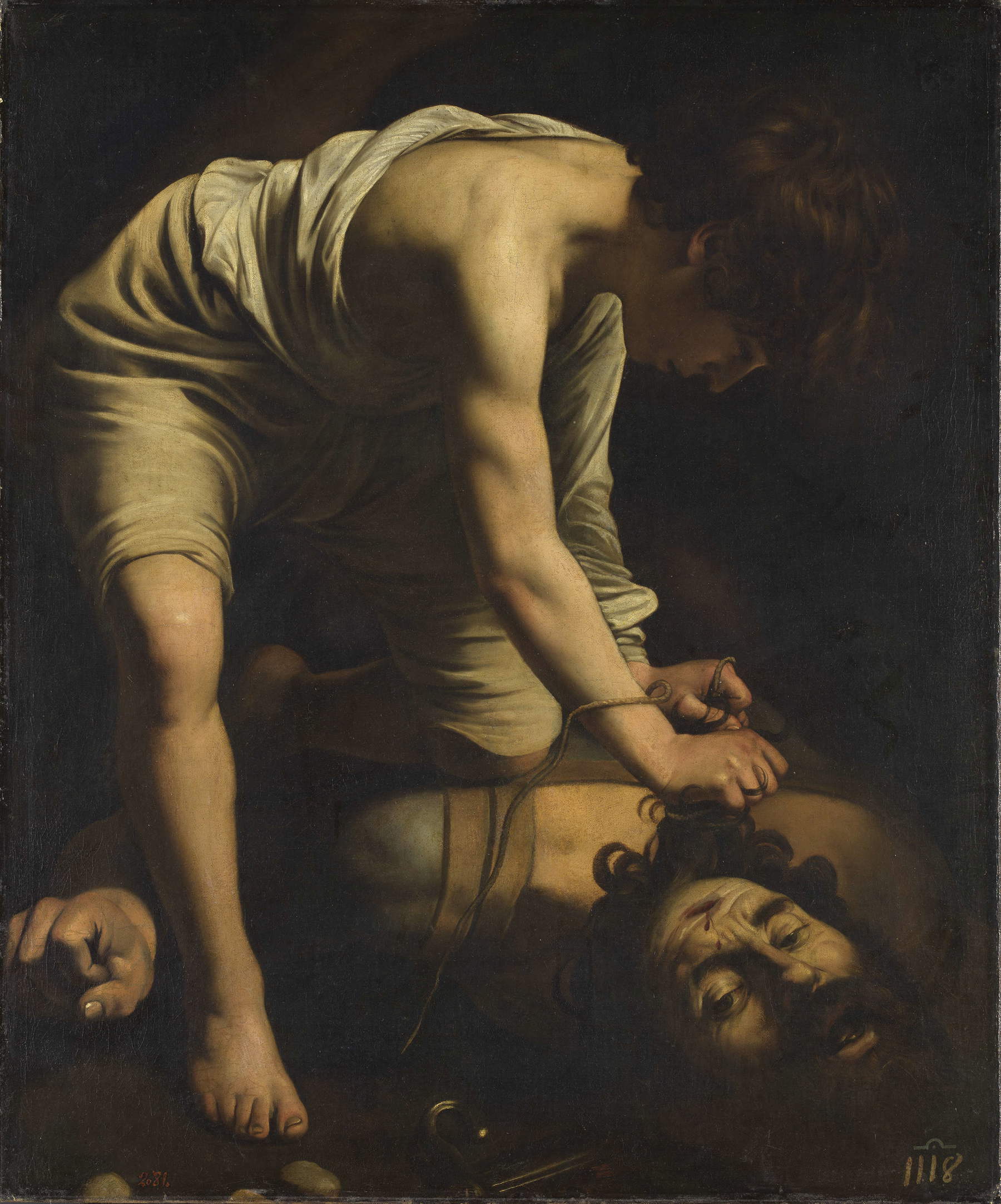Prado's David may not be by Caravaggio: expert's doubts after restoration
One of the most authoritative scholars of Caravaggio (Milan, 1571 - Porto Ercole, 1610), Alessandro Zuccari, has questioned the authorship of one of the best-known paintings attributed to the Lombard painter, the Prado Museum’s David and Goliath : according to Zuccari, some details of the painting, which are better readable following the recent cleaning carried out by the Madrid museum, would not correspond to Caravaggio’s typical technique, but would, in his opinion, suggest an attribution to Giovanni Antonio Galli known as lo Spadarino (Rome, 1585 - 1652).
The scholar put forward the hypothesis (postponing, however, definitive conclusions to more in-depth analysis) in an article published in the online version of the scholarly journal Storia dell’Arte of which Zuccari himself is editor. The La Sapienza University of Rome professor premised that in any case, doubts had already been raised in the past about the work’s authorship, and he himself had been perplexed ever since the canvas was exhibited in 1985 at the major exhibition The Age of Caravaggio held in New York and Naples: on that occasion, the Caravaggesque autograph was endorsed by Mina Gregori, one of the foremost authorities on Caravaggio. The painting was published as autograph, for the first time, by Adolfo Venturi in 1927, yet already a few years later there were those who expressed doubts: among them, Juan Ainaud de Lasarte in 1947 and Bernard Berenson in 1951 (both considered the Prado work a copy). Even Roberto Longhi initially believed, in 1943, that it must be a work by Carlo Saraceni or his school, although he later revised his opinion (eight years later) by attributing the painting to Caravaggio after examining the reproductions published by Lasarte following a cleaning. In fact, Longhi believed that the quality of the painting was too high for a copy. Mina Gregori, in the file on the painting published in the exhibition catalog The Age of Caravaggio, wrote that an analysis of the Prado’s David suffers from the difficulty of stylistic and chronological placement within Caravaggio’s production. “And although the writer,” the paper states, “is firmly convinced that Caravaggio conceived the image, she cannot at present decide whether it is an autograph or, what seems less likely, a copy.”
Gregori herself, however, as did Richard Spear in 1971 (whom Gregori cited in the card), noted an affinity with the Narcissus preserved in Rome’s Palazzo Barberini, a painting for which critics today have almost unanimouslyunanimously discarded the Caravaggesque autography, in favor of an attribution to Spadarino (forty years ago, however, the contours of the question were not yet so clear).

Zuccari, as anticipated, says that he has had doubts about the autography since the time of the 1985 exhibition, “because of the somewhat schematic composition especially in the body of Goliath and the un-naturalistic drapery enveloping David’s left arm”, the scholar writes in his article, adding, however, that he has not expunged the painting from the Caravaggio catalog (as others have done, for example Sybille Ebert-Schifferer who does not consider the work in her monographs on Michelangelo Merisi) because of the wide agreement among scholars on the attribution and the lack of an alternative name to which to ascribe the work. The scholar claims to have had the insight into Spadarino’s name as soon as he saw the painting from life following recent cleaning. “This restoration,” Almudena Sánchez, who was in charge of the intervention, had said, “shows us a new Caravaggio, providing us with an image of the painting hitherto unknown, the authentic image of this great masterpiece that after so long in the shadows recovers the light with which it was conceived.” A Caravaggio so new ... as to raise doubts.
According to Zuccari, the first element to dwell on (and to doubt, in his opinion) is the dark line bordering David’s arm , which the painter drew, the scholar writes, “to prevent the light coloring of the complexion from having due prominence over that of the shirt sleeve.” This is, Zuccari explains, “a widespread expedient that Caravaggio usually did not resort to, and when he made use of ’pictorial drawing’ to define forms (from the Contarelli laterals onward), he masked the dark brushstrokes with appropriate colors: see, for example, the left arm of the Judith in Palazzo Barberini where it is superimposed on the white shirt. In contrast, the young hero’s arm, while well constructed volumetrically, from elbow to wrist creates a certain ’cut-out silhouette’ effect. In this regard, it will be interesting to examine the X-ray investigations of the Madrid David with those of certain works by Merisi.”


The second dubious element according to Zuccari are the “glossy” complexions which, the scholar writes, "do not correspond to the way Caravaggio paints them. One need only compare the figure of David with the adolescent nude in theAmor vincitore in Berlin to realize how the Lombard painter prefers to maintain a certain opacity of the epidermis, although the boy’s body is strongly illuminated. Such obvious points of light on David’s knee and right hand constitute a typical Spadarino character and are found, for example, in the Narcissus, theGuardian Angel (Rieti, San Rufo) and the Saint Sebastian of Senlis (Musée de la Vénerie)."
There would then be similarities between David’s face and some figures of adolescents that can be found in Spadarino’s production, for example, the young angel that appears in the painting with St. Francesca Romana in the BNL Collection in Rome. Again, another element that would be according to Zuccari quite unusual for Caravaggio is the face of the protagonist in shadow, so much so that other paintings with the same subject, such as the David in Vienna or the one in the Galleria Borghese, present the biblical hero in a frontal pose. But according to Zuccari one should also doubt the figure of Goliath, “both in the somewhat awkward rendering of the body and in the physiognomy of the face.”
However, an element favorable to a Caravaggesque autography could be represented by the pentimenti found by the analysis of the x-rays, since the opinion is rooted that Caravaggio used to frequently modify his compositions. “In fact, originally,” Zuccari further writes, “the giant’s head had a horrifying appearance, with the eyes wide-open, the mouth gaping and the upper teeth in view; therefore, the commissioner must have asked to ’soften’ the image, or the painter preferred to correct the painting to make it more palatable on the market.” However, the presence of pentimenti would only serve to rule out the idea that it is a copy, but it would not dispel doubts about autography, since Caravaggio was certainly not the only artist to modify works once he began and, indeed, according to Zuccari, “it is necessary to dispel this topos, which recurs too often to prove the attribution of a painting to the Lombard master.”
In conclusion, Zuccari does not intend to “downgrade,” as he claims, a Prado masterpiece, but rather to reopen a debate that in his view “has not come to convincing conclusions, as those concerning the Narcissus in the Galleria Nazionale di Palazzo Barberini were not.”
 |
| Prado's David may not be by Caravaggio: expert's doubts after restoration |
Warning: the translation into English of the original Italian article was created using automatic tools. We undertake to review all articles, but we do not guarantee the total absence of inaccuracies in the translation due to the program. You can find the original by clicking on the ITA button. If you find any mistake,please contact us.





























